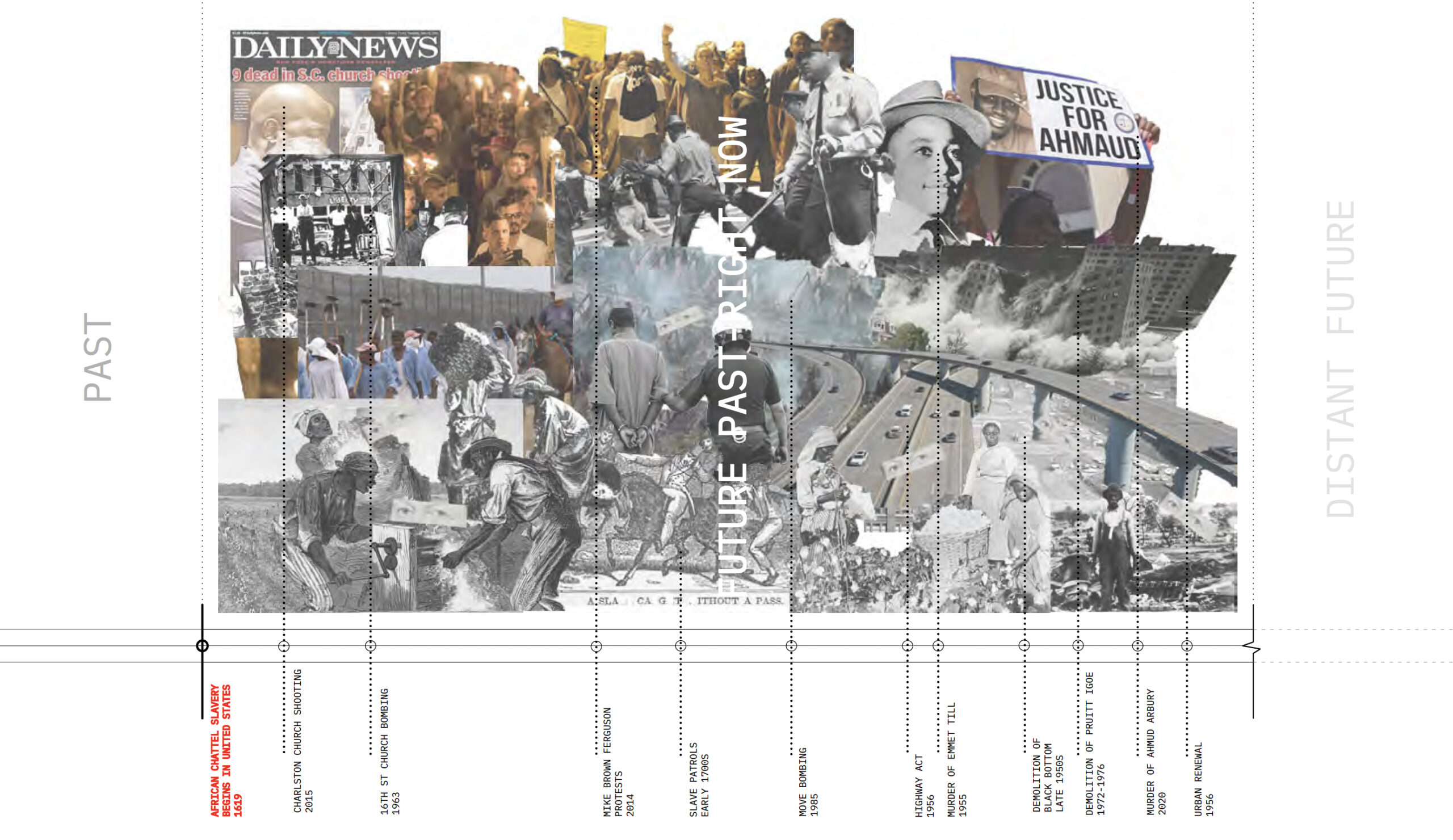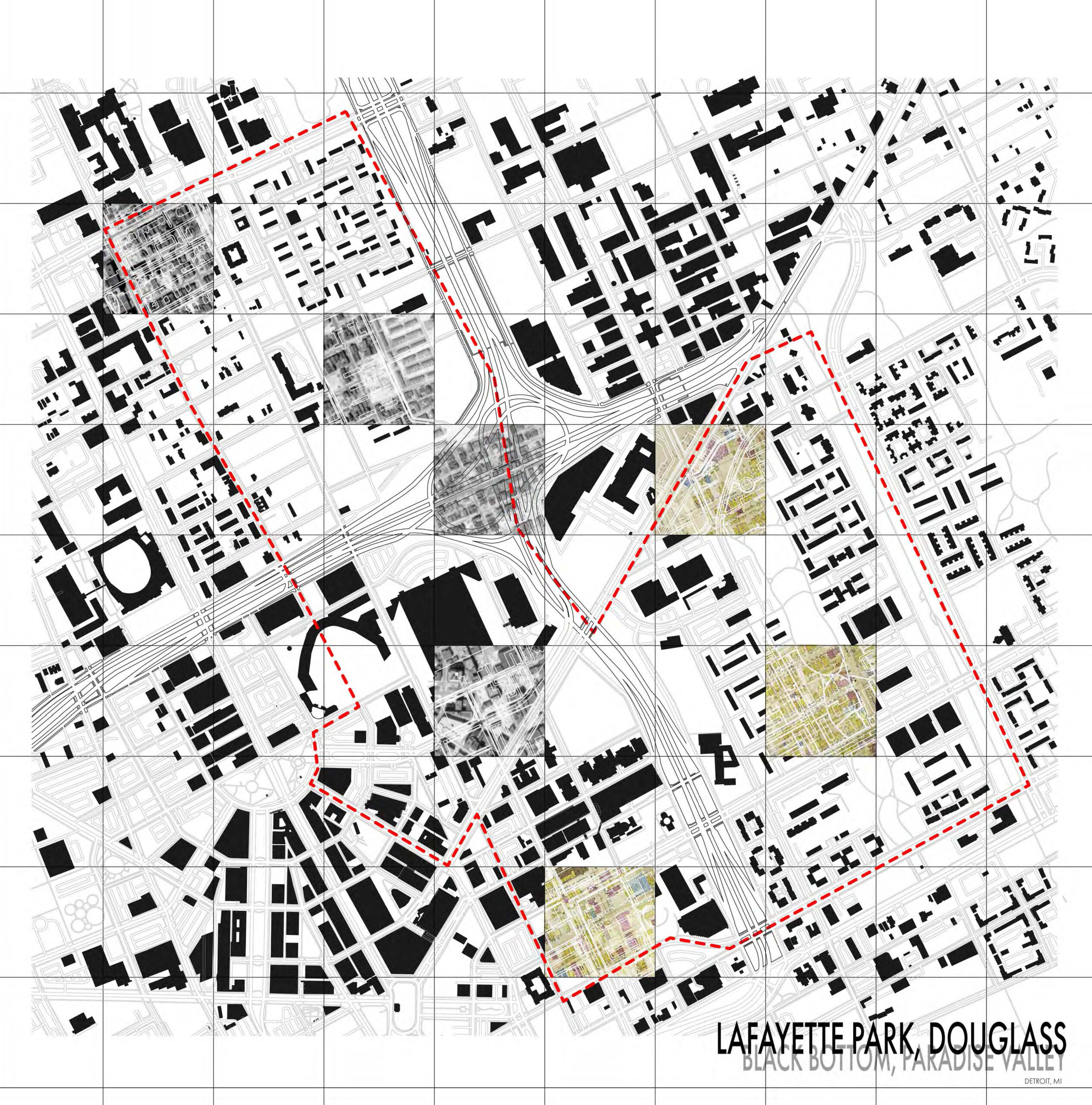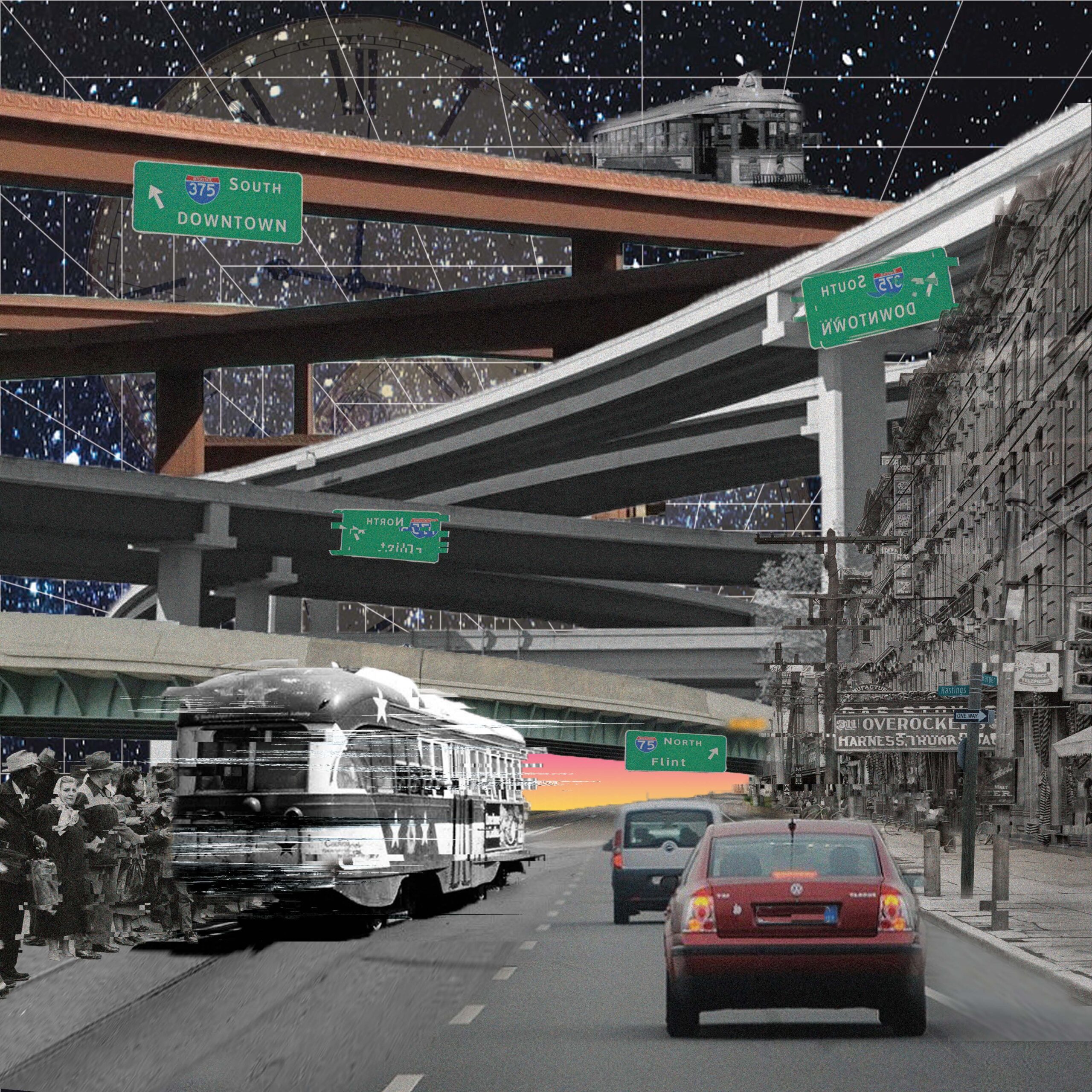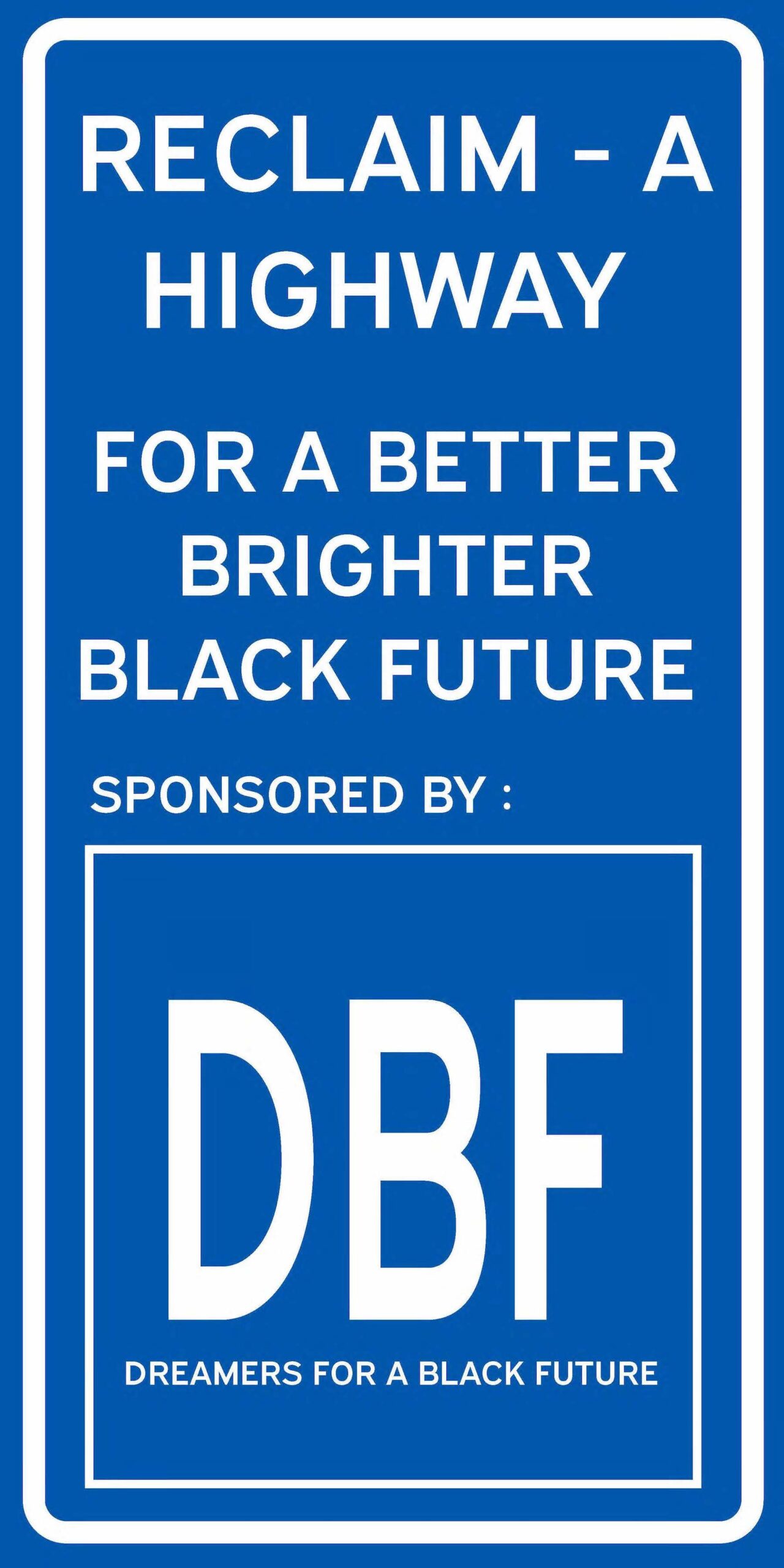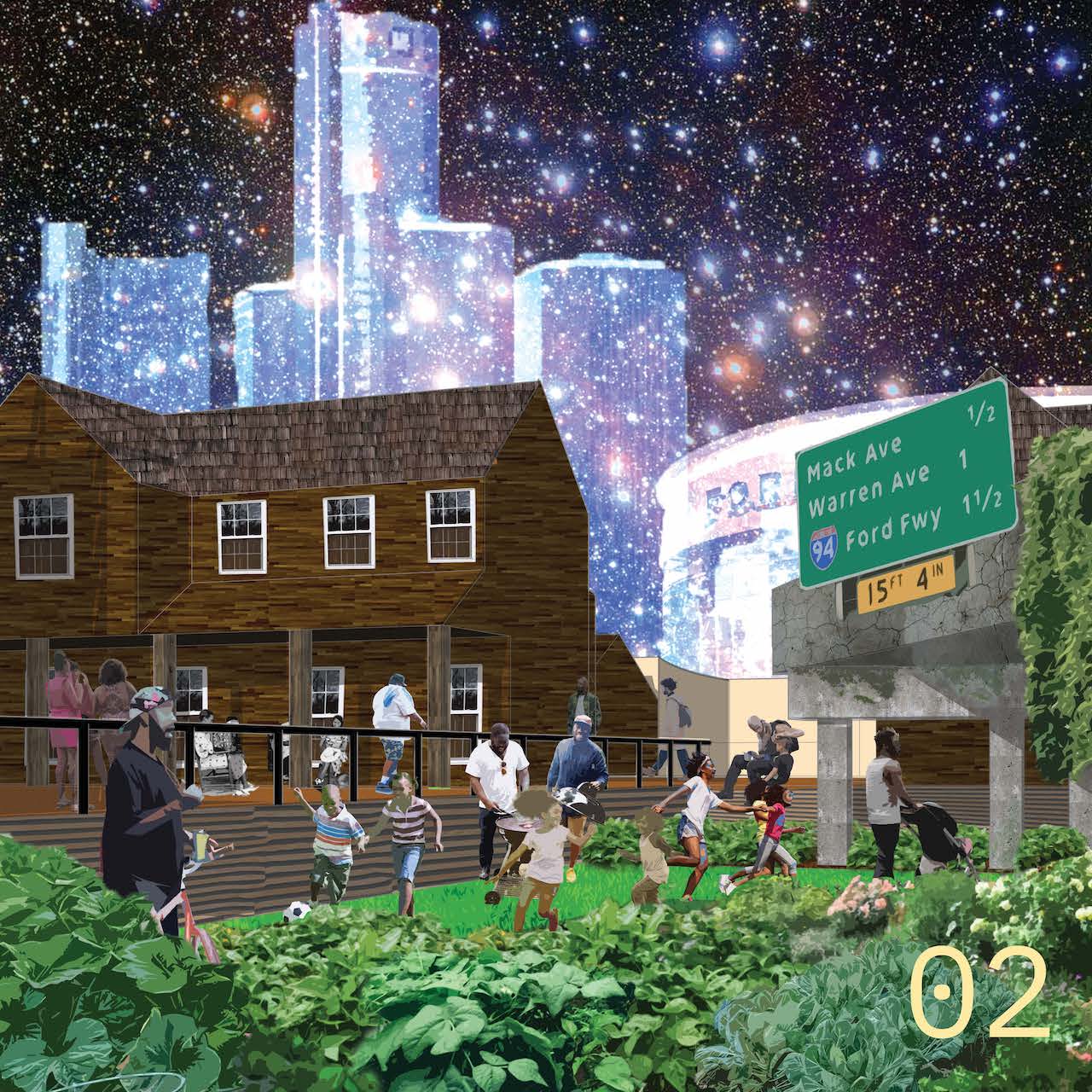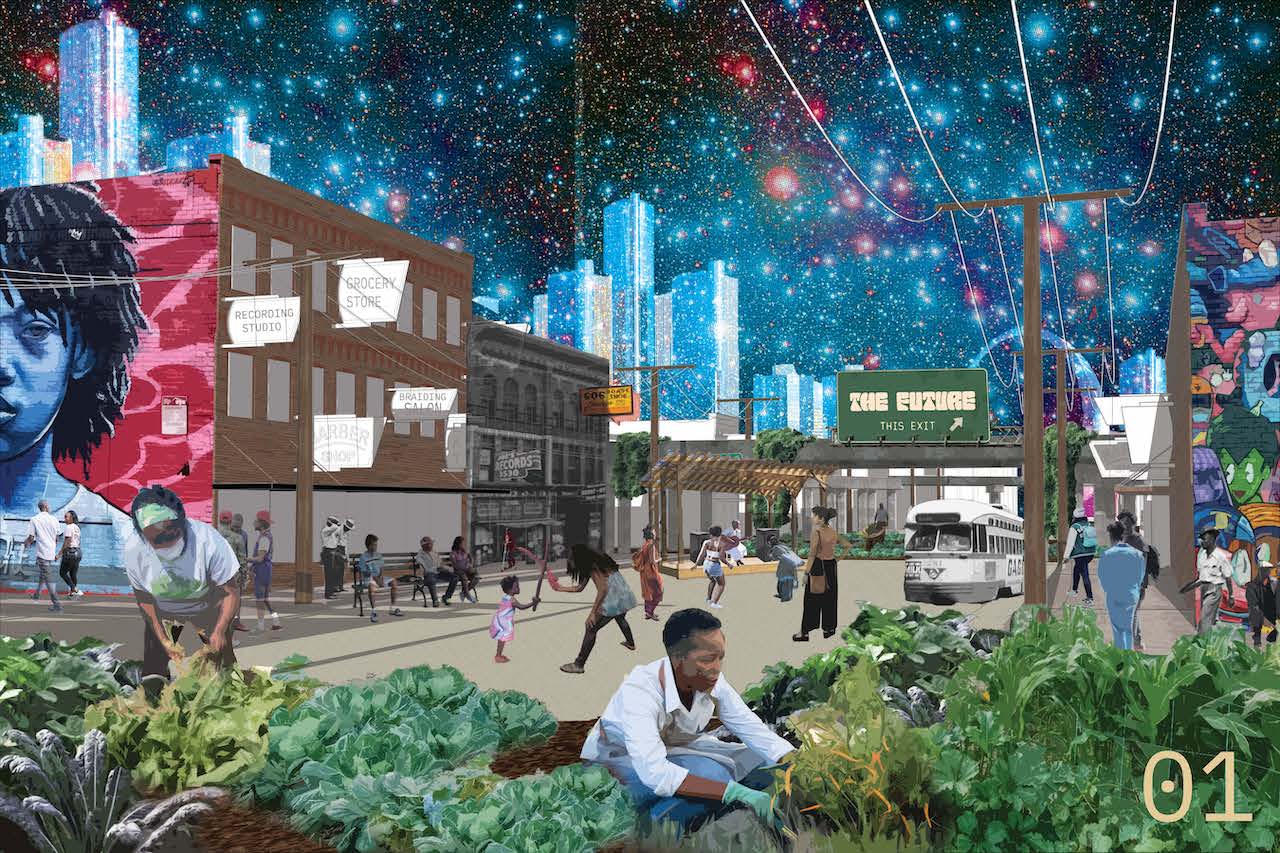Invisible Realities of Future-Past, the degree project of Cierra Francillon and Caleb-Joshua Spring, both BArch ’22, won the Pratt Institute School of Architecture Degree Project Prize and was first runner up for the SoA Social Justice Prize in 2022.
The text and images presented here are excerpted from Francillon and Spring’s project presentation.
Located in Detroit, Black Bottom and Paradise Valley were social and cultural meccas, a symbolic center of Black life. This place was one of the major destinations of the Great Migration of the 20th century, a mass exodus of Black people fleeing the intense racism in the South in search of better opportunities. Black Bottom and Paradise Valley, which were significant centers of African American life, were razed by the city of Detroit and state of Michigan for urban renewal and to construct the Chrysler Freeway (I-375), displacing large numbers of Black people and creating root shock in the Black community that has present-day ramifications.
This project is rooted in the exploration of the dispossession and subsequent root shock caused by the American highway system and urban renewal. Black people have been relegated to the leftover space since the end of slavery, and turned places of refuge into places of sanctuary, joy, and delight. The destruction of Black space is the destruction of all Black people. This project seeks to rectify the effects of root shock by imagining a parallel present where Paradise Valley and Black Bottom re-emerge, and are allowed to grow without disruption from the effects of white supremacist policies.
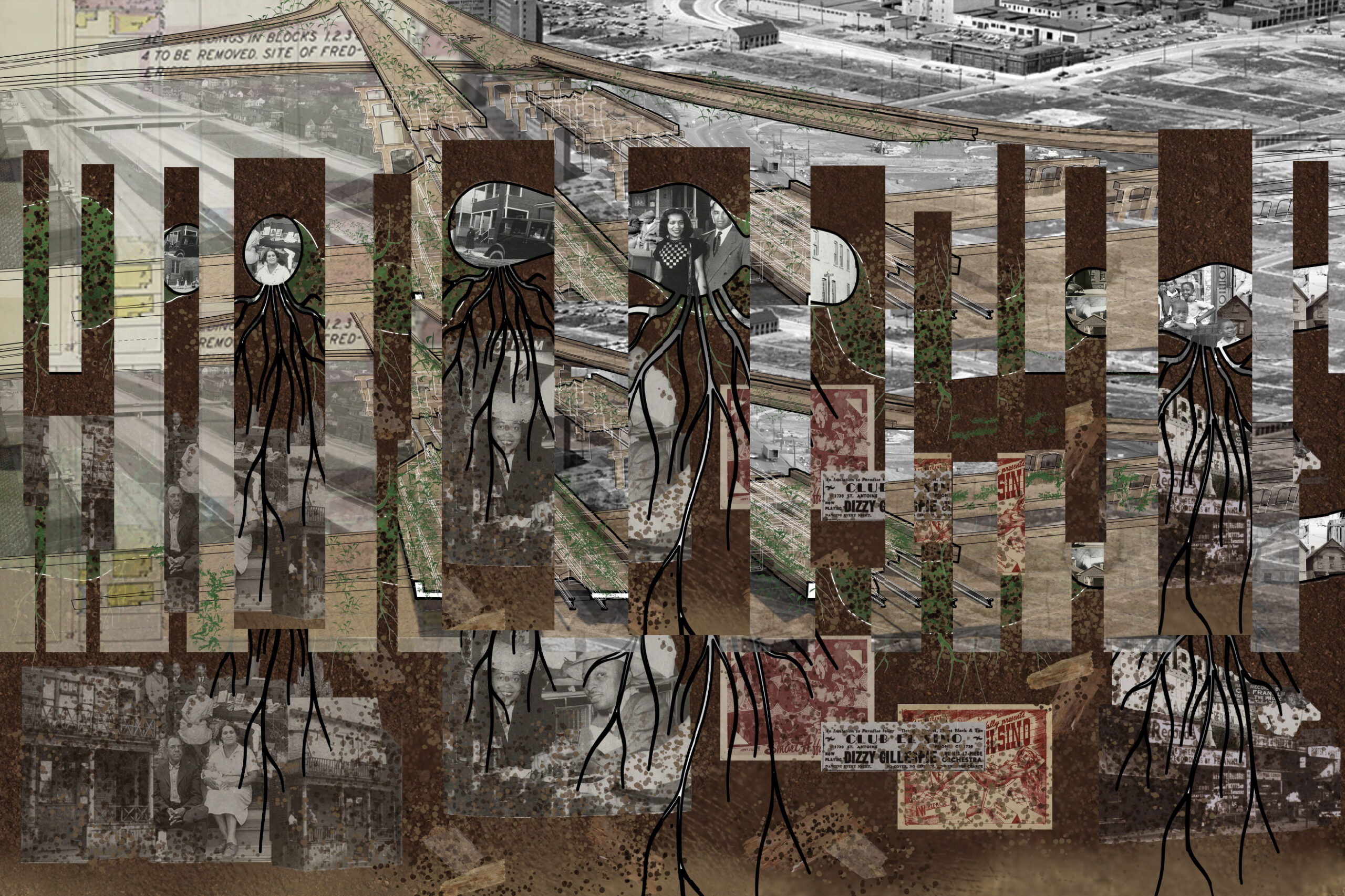
The richness of Black Bottom and Paradise Valley exist in the soil/land and are likened to a rhizome, a thick unorthodox root that travels linearly just under the soil, absorbing nutrients and minerals from the soil in the root, and then sending up shoots when conditions are right on the surface. Rhizomatic plants are often seen as invasive because of their resilience, their ability to survive even if you raze what is on the surface. In this hidden reality, we are speculating what would happen if this rhizome, sitting in the earth, taking in this rich, trapped Black space, is allowed to flourish, grow, and reclaim the highway to support the revival/re-materialization of the Black cultural and social mecca that was Black Bottom and Paradise Valley.
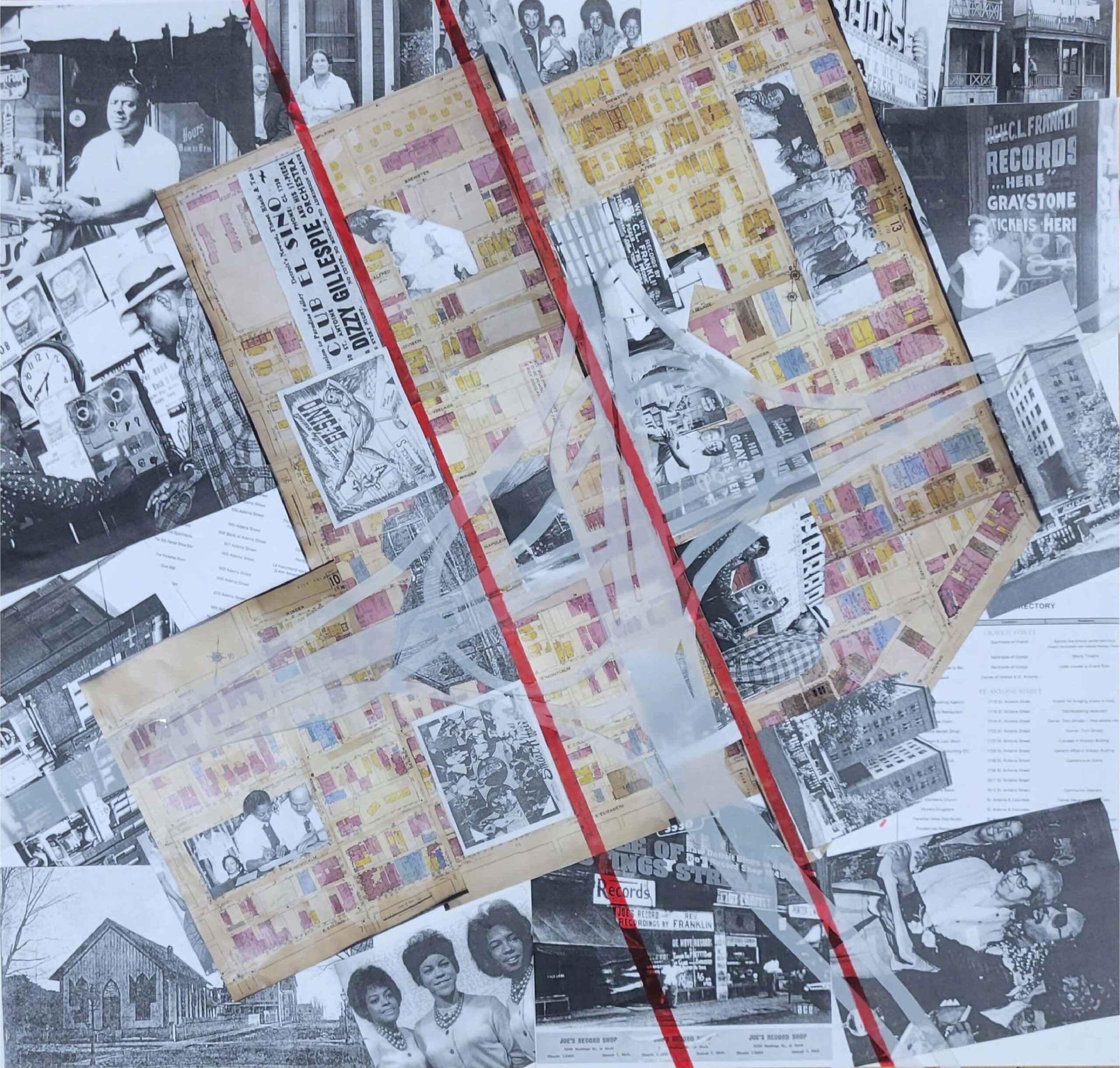
Afrosurrealism operates in the layering of time, a superimposition of past, present, and future, urging us to see that neither of these can be divorced from one another, especially in the context of Black existence. We are interested in using Afrosurrealism to uncover, manifest, conjure up, and materialize the invisible reality of unconditional Black spaces of liberation, joy, and life derived from the legacies of Black Bottom and Paradise Valley. Our project is making the argument that while Black Bottom and Paradise Valley have been destroyed as places, this rich Black space still exists, hidden from our view, existing in a different reality, waiting for an opportune time to emerge.
The goal is to speculate a new way of black urban life, or a new Black Commons, dissolving the highway system to return the commons to Black people, accessing this parallel reality that is rooted in the legacies of Black Bottom and Paradise Valley. The domestic commons, the commons of sustenance, the commons of cultural production and leisure, and the space of the collective, are new typologies that lean on music, ritual, care, and agriculture, to restore Paradise Valley and Black Bottom as cultural and social meccas in Detroit. Afrosurrealism encourages, supports and allows a rhizome of personal relationships spanning across Africa and North America to reimagine and reform a Black Detroit in the crux of the interstate highway system and urban renewal. As the highway system crumbles into disrepair and is abandoned, a new Black Commons will emerge from the ruins of late-stage capitalism and its white supremacist policies.
